UC Blogs
USDA food pyramid to be retired tomorrow
The USDA will introduce America to a new "food icon" tomorrow during a national online press conference, the agency has announced. The New York Times reported over the weekend that MyPyramid (right) will be replaced by a simple, plate-shaped symbol, cut into four wedges - one for fruit, one vegetables, one whole grains and one protein. A small circle on the side will represent dairy.
The article said the Times sourced its information from "several people who have been briefed on the change." It reported that USDA spent about $2 million to develop and promote the new logo, conduct research and focus groups and create the website.
In its announcement about tomorrow's roll out, USDA said the new food icon will be part of a comprehensive nutrition communication initiative that provides consumers with easy-to-understand recommendations, the new website, plus other tools and resources. Tomorrow's press conference will be live-streamed at http://www.usda.gov/live beginning at 7:30 a.m. Pacific Time. A press kit and other information will be available tomorrow at http://www.cnpp.usda.gov.
Americans have been following a pyramid-shaped eating guide for nearly 20 years. The original Food Guide Pyramid, released in 1992, showed a hierarchy of foods, with those that should make up a greater portion of the diet depicted on a wide base, tapering up to smaller quantities at the top. The pyramid had grains as the foundation, fruits and vegetables making up the next largest section, followed by meats and dairy and, in a tiny section at the top, added fats and sugar.
The pyramid was turned on its side in 2005 when USDA introduced the revised "MyPyramid." Vertical strips represented the different food groups and a stick figure running up the side emphasized the need for exercise.
Look for a summary of the news conference, a link to the new website and a picture of the new USDA icon in the UC Food Blog tomorrow.
The Golden Girls
When you encounter a "Golden Girl" in your backyard, there's one thing to do: grab the camera.The "Golden Girl," in this case, is an Italian honey...
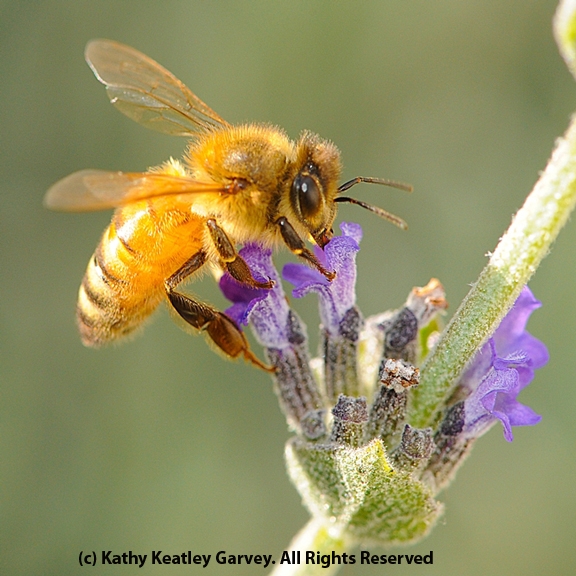
Honey bee on lavender. (Photo by Kathy Keatley Garvey)
Mariposa gardener inspires story about UCCE program
The Mariposa County UC Cooperative Extension Master Gardener program got a shot in the arm Saturday when the Merced Sun-Star ran a lengthy feature about the extensive gardens of one of the program's 50 volunteers, Elna Philbert.
Philbert's one-acre "Tannenbaum Forest" got its start 22 years ago with a Colorado blue spruce she received in memory of her late husband, the article said. Each year since, she purchased a living Christmas tree and planted it in the yard.
In time, the retired teacher added a Japanese maple grotto, grasslands, a presidential rose garden and a 49er corner, decorated with rusted shovels, buckets and gold pans she found on her property. Philbert told reporter Debbie Croft the garden is her pride and joy.
The article went on to describe the active Mariposa County Master Gardener program, noting that Mariposa volunteers have contributed more than 25,000 hours since 1995 to extend gardening information to their neighbors. The group helped start Merced's Master Gardener program three years ago. Five recent graduates received their certification, bringing Merced's total to 42, with more than 3,000 hours of service completed.
"We don't solve everyone's gardening problems," the story quoted Master Gardener Betty Johnson. "We assist county farm advisers by providing research-based information to the community."
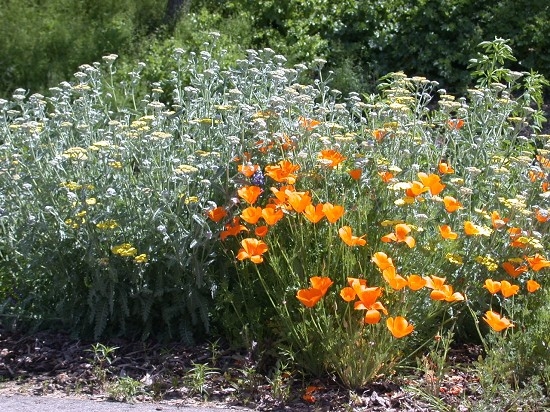
Yarrow and California poppies growing in the Mariposa MG demonstration garden.
Red-Eye Flight?
Unlike airplane pilots, honey bees don't file a flight plan.They know where they're going because their sisters tell them with their waggle dances....
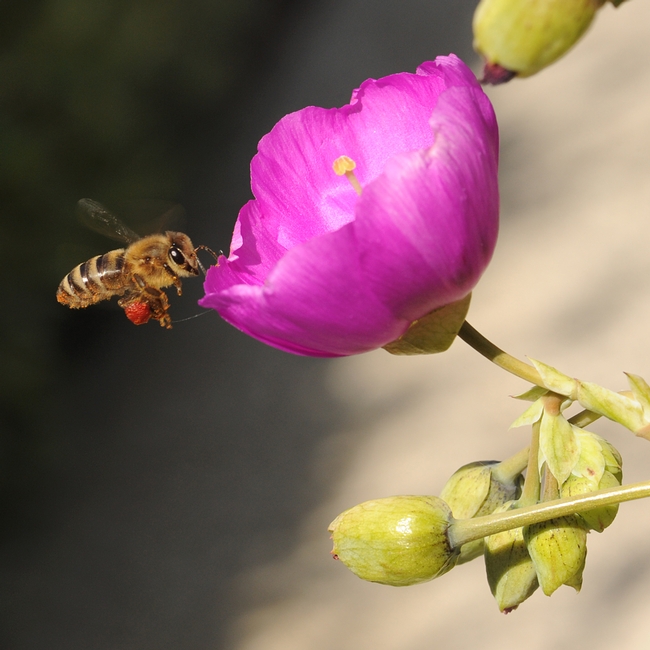
Pollen-packing honey bee heading toward a rock purslane. (Photo by Kathy Keatley Garvey)
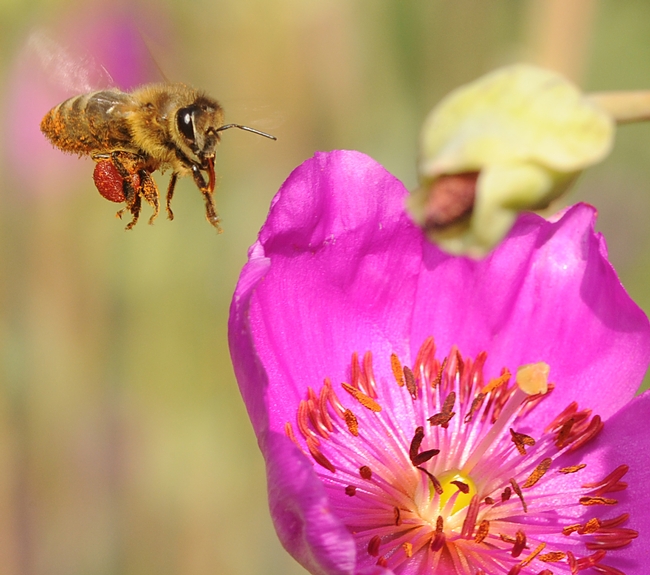
Cleaning her tongue as she flies, a honey bee is on a mission: rock purslane. (Photo by Kathy Keatley Garvey)
Not a Good Day for a Flower Fly
It was not a good day for a flower fly.A flower fly, aka syrphid fly, dropped down in a patch of pink roses at the Häagen-Dazs Honey Bee Haven at UC...

Crab spider nails a flower fly in the Haagen-Dazs Honey Bee Haven. (Photo by Kathy Keatley Garvey)
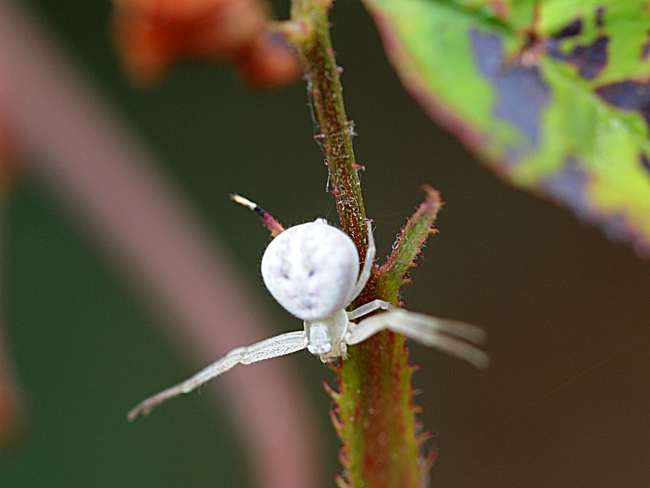
Crab spider loses its prey and heads down a stem. (Photo by Kathy Keatley Garvey)


